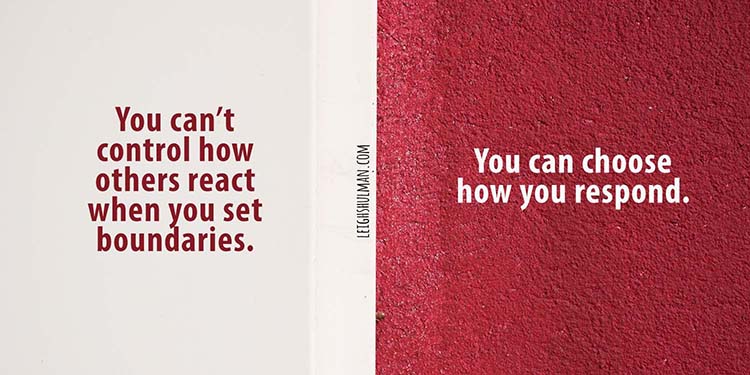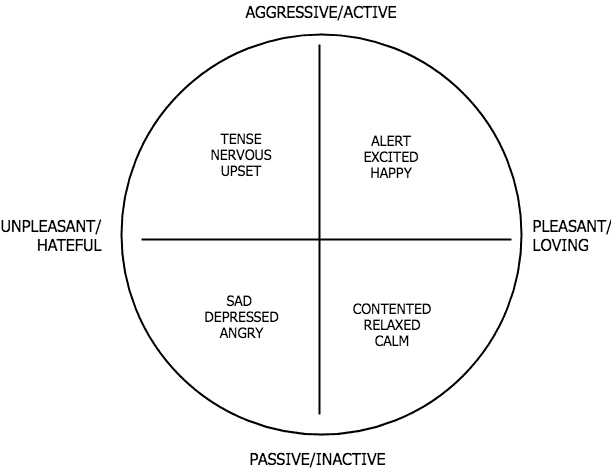Boundaries are everywhere.
We set them in our personal lives. With parents, siblings, our children and friends.
We set them in our work lives. From negotiating pay to deciding whencharge to stop work for the day.
We set them with ourselves. What time to go to bed at night. What we eat. Who we hang out with on weekends.
You get the idea.
I’ve become an expert at setting boundaries for myself, but along the way, there has been endless drama, because it’s hard to know when and how to set one. It’s taken me a few decades to figure out how.
I wrote about boundaries in my book about creating the writing life you want, The Writer’s Roadmap, because it’s impossible to create a plan for your writing life and stick to it if you don’t have clear expectations in place.
I could write an entire book about setting boundaries and saying no. People don’t like hearing it. They might feel angry and act petulantly. Sometimes, you’ll need to walk away and give them space, but usually, people get over it. If they don’t, it’s not your problem. Their happiness is not your responsibility.
In the long run, you’ll be happier when you set a boundary and cut these unwanted, unnecessary things off your list. You’ll have more time, more energy, and more space for the people and things you truly want.
When people push back on your boundaries, they push hard. Often, it feels so much easier to just let go and give people what they want, but the time and energy you’ll spend trying to navigate what others want won’t allow you to focus on what you actually want or need.
I’ve lost sleep, cried, forgotten to eat and raged around the house because I didn’t want to set boundaries—or didn’t know how. Even when I finally owned up to the fact I needed better boundaries in all areas of my life, it was a huge struggle knowing when to apply them.

Setting boundaries is a delicate art.
Sometimes, you don’t have to be completely honest with people about your boundaries. Sometimes, it’s just simpler to fudge the truth a bit. I learned this the hard way.
A few years ago I was part of a writer’s group created for mutual support and to find work. Unfortunately, there was more complaining than anything else. There was little work, no collaboration and ultimately the group left me more stressed out than anything else.
So I set a boundary and decided to leave. Leaving was the best thing for me, but how I left was the problem. I decided to be honest about my reasons for leaving. Looking back, I don’t know what I thought I’d accomplish by telling a group of people in an online group that they complain too much. It didn’t go over well.
I gained nothing from my honesty, upset people needlessly and would have been better off making an excuse to end the situation cleanly and easily.
Other times, it’s necessary to let people know what’s up and why.
I recently hired someone to help me with my social media. I had too much to do and was ready to hand it off to someone with more experience branding authors.
When we began working together, I thought I knew what to expect working together. During the first month, I realized I wasn’t so sure. I didn’t understand why she chose content or how that content would represent me. I also didn’t know how quickly my author platform would grow or how much I needed to post on my own.
At first, I was reticent to bring things up, because she is the expert. Not bringing them up left us both frustrated and confused. Ultimately, I decided I had to talk to her.
If I didn’t like something she posted, I mentioned it and explained why. When a graphic didn’t match the graphics on my website, I brought it up. I asked a huge number of questions our first months working together. She patiently answered, and we found solutions together.
Thankfully, talking to my lovely social media manager was easy. She heard me out, and we were able to clear up any miscommunications and get back on track with no problem. We were able to navigate our boundaries together and build trust.
Miscommunication is a normal part of working with other people.
It really sucks, though, when these discussions don’t go well. Too often they don’t. People get angry, blame and even call names. I’m often shocked at the lengths people will go to when they hear feedback they don’t like, even necessary feedback.
Negative feedback, even when useful and constructive, leaves us feeling attacked and unworthy. The natural reaction to those feelings is to push back. When someone tells you you’ve done something wrong, most of the time your immediate reaction will be to say “No. It’s not me. You’re the problem.”
Timothy Leary — yes the same one who experimented with LSD — has some ideas as to why this happens.
The science of setting boundaries.
In the 1950s, Leary outlined human behavior via his Interpersonal Circle Model of Personality. According to this model, all human interaction falls on two axes between pleasant and unpleasant, active and passive.
The following chart lays it out for you visually:

An action on one end of a spectrum reflexively elicits a response on the opposite side of the active/submissive spectrum.
For example: When someone invites you to a movie, it’s an active and friendly action. When you respond with yes, you are acting in passive but equally friendly manner.
A self-interested autocratic person seeks people who will respond passively to his very active demands. He demands you fulfill his wishes, and as long as his demands remain on the pleasant loving side of the spectrum, you and I are more likely to respond.
One exception to the rule
When the initial behavior is both aggressive/active and hateful/unpleasant, then the natural reaction is equally aggressive and hateful.
Someone pushes you. You push back.
Someone criticizes you. You criticize back.
“You’re an asshole.”
“Yeah, well fuck you. So are you.”
Bringing it back to boundaries.
You can’t control how others react when you set your boundaries. You can, however, choose how you respond.
When you set boundaries with others, you can choose your words and actions to be honest and straightforward — which falls under aggressive — but you can phrase it in a way that is as pleasant and loving as possible.
If you receive a response that is aggressive and angry, chalk it up to the other person’s inability to hear you.
State your case as you need to and stop when there’s nothing left to say. You cannot convince someone to respect your boundaries. You can, however, walk away from the conversation when it is no longer bringing you closer to what you want.
It all begins with your plan.
You cannot set boundaries if you don’t know what you want. Until you have a plan, you have nothing to create a boundary around.
How-to set your own boundaries?
First, I highly recommend reading Thanks for the Feedback: The Science and Art of Receiving Feedback Well. It breaks down the types of boundaries and feedback we receive and then helps navigate ways of incorporating or rejecting them.
Second, I suggest therapy. The better you know yourself, the more easily you can communicate what you want to others.
Finally, if you want to create a plan for your writing life that includes setting clear boundaries and communicating them to others, follow the following four steps.
1. Know what you want
2. Ask for it clearly.
3. Continue responding with kindness and firmness.
4. Know when to stop or make a change.
These four steps follow the same structure I use in The Writer’s Roadmap, my book to help you create a plan for your writing life, to help you set a clear objective for your writing as well as place it squarely in the context of your values and beliefs.
These four steps have never steered me wrong when approaching an editor to write a story and negotiating prices. They’ve helped me when interviewing people to work with me as I run my business. They’ve even come in handy during a holiday dinner when politics pops into the conversation.
When you make decisions based on your core values, it’s much easier to set boundaries—in all areas of your life. When you are focused on your goal and committed to making it happen, it’s easier to stick to your boundaries. When you waver, that’s when things get sticky.
Now, it’s up to you to take the next step!
